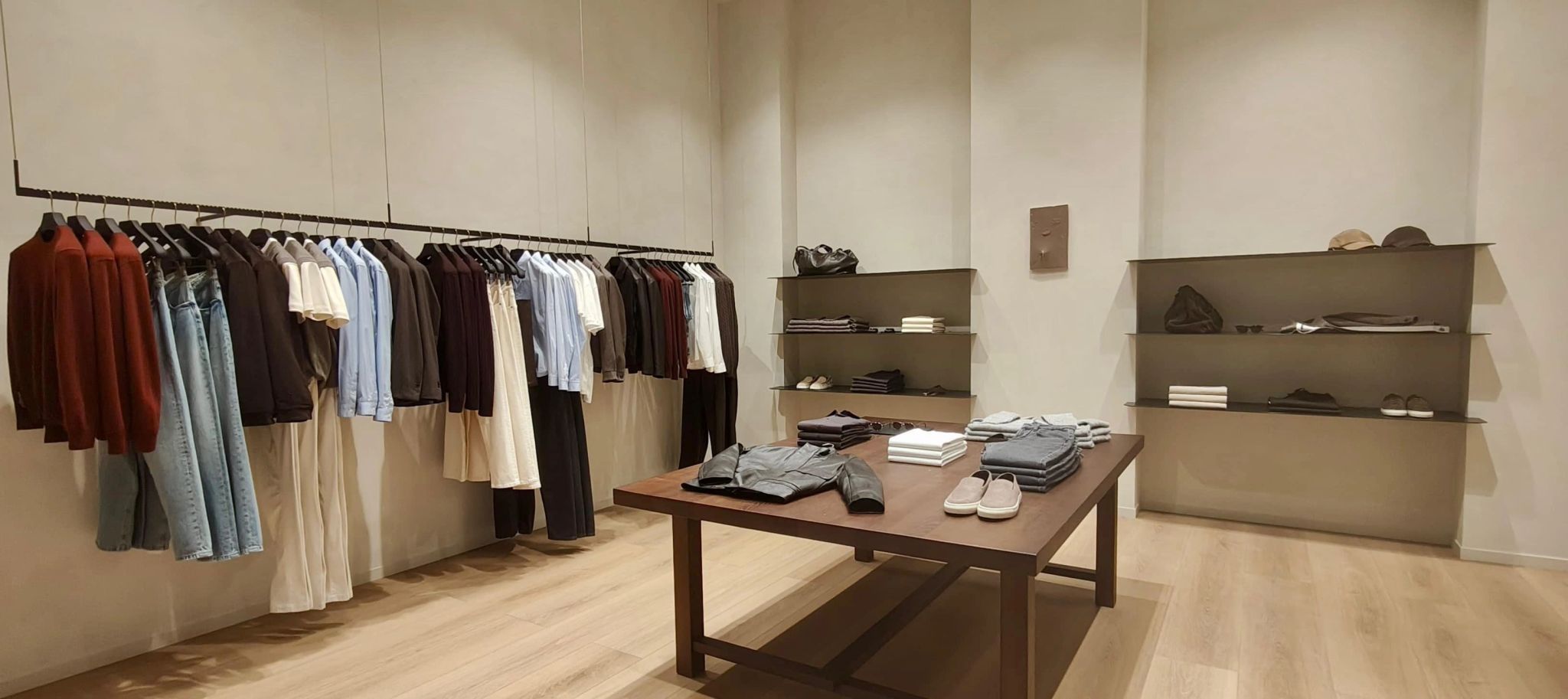Massimo Dutti opened its third store in India this week at Phoenix Mall of Asia, Bengaluru, joining its existing outlets at Select Citywalk (New Delhi) and DLF Mall of India (Noida). The 13,000 sq ft Bengaluru store is the latest example of a deliberately curated rollout by Inditex’s up-market label in India — a measured, metro-first expansion that sits in contrast to the rapid scale push of several home-grown formats.
While Massimo Dutti’s India footprint remains boutique (3 stores), the brand forms part of a wider Inditex–Trent engagement in India where Zara is the primary mass-premium face of the Spanish group. Zara’s India JV reported sizeable revenues and profit in FY25 — roughly Rs 2,782.06 crore in revenue and Rs 299.47 crore in net profit — operating a mid-twenty store footprint across India’s major cities. Zara is a large, profitable business in India, but recent years show a slower top-line expansion compared with the breakneck growth of value formats.
Zara vs Massimo Dutti: Scale and Strategy
Zara’s India strategy emphasises curated city-level presence and experiential, higher-average-ticket store formats. Massimo Dutti’s three-store approach follows a similar premium, mall-anchored play but on a far smaller scale — consistent with its global positioning. Both brands underpin Inditex’s premium portfolio in India, yet neither has become Trent’s principal growth engine; that role has been assumed by Trent’s own home-grown formats.

Trent’s Portfolio: The Two Engines — Zudio and Westside — and New Incubations
Trent’s FY25 and FY26 performance shows a clear, two-speed strategy: hyper-scale value through Zudio, and measured, private-label led full-price growth through Westside — complemented increasingly by incubated niche brands (Utsa, Samoh, Burnt Toast) and adjacent formats. Consolidated FY25/early FY26 results put Trent’s consolidated revenues in the ~Rs 16,600–Rs 17,125 crore band and a fashion-store portfolio comfortably above 1,000 outlets, driven largely by Zudio’s rapid rollout.
Zudio — Scale, Value and Velocity
Zudio has emerged as Trent’s primary growth engine. By end-FY25 it had crossed roughly ~765 stores across ~235 cities, adding 244 net new openings in FY25 alone. The brand’s price architecture is deliberately low-ticket (many SKUs priced under Rs 999), engineered for high-frequency purchases in Tier-2 and Tier-3 catchments. Zudio’s velocity and scale materially lifted Trent’s consolidated revenues; the format is expected to continue aggressive roll-out into under-penetrated catchments.
Westside — Curated Scale and Private-Label Muscle
Westside remains Trent’s higher-aspiration department store chain, operating ~248 stores and focusing on private-label assortment, store experience and omnichannel improvement. Westside’s model drives better gross margins through in-house brands and has been supported by selective new openings (about 40 new Westside stores in FY25) alongside store refreshes and improved online fulfilment (online contributing roughly 6%+ of Westside sales). Westside is the margin anchor in Trent’s portfolio.
Other Trent Formats: Star (food & grocery), Beauty and Lifestyle Experiments
Trent’s Star grocery format and smaller lifestyle concepts round out the portfolio — Star operates in the dozens of stores and contributed meaningfully to the company’s Q1 revenue mix. Trent has also been experimenting with beauty and category extensions (Zudio Beauty, footwear, innerwear), which bolster basket depth and omnichannel relevance.
New brand Incubation: Utsa, Samoh and Burnt Toast — Strategy, Starts and Scope
Over the past five years Trent has actively incubated new brands to broaden its addressable market and capture distinctive consumer segments rather than rely solely on its legacy banners.
- Samoh (launched April 2023) — positioned as an occasion / premium ethnic-contemporary label. Initial rollout began in Lucknow and expanded to Bengaluru and Hyderabad with curated store sizes (1,800–4,000 sq ft) and a focus on higher-margin occasion wear. Rollout has been measured, emphasising product and experience over rapid scale.
- Utsa — conceived as a modern Indian women’s lifestyle destination (apparel, footwear, innerwear, beauty & accessories). Utsa remains a smaller, curated format within the Trent family intended to serve aspirational, creative women; public disclosures so far show modest offline presence with a product mix designed for margin and differentiation rather than quick expansion.
- Burnt Toast — Trent’s most recent youth-centric brand, launched with initial stores in Bengaluru and early rollouts including Surat. Management has signalled a youth-first store strategy: anchor openings in catchments with dense youth populations and a phased rollout across cities to capture Gen-Z demand. Early public commentary suggests a measured but multiple-store rollout in FY26 (management commentary and press indicate plans to scale the chain across additional youth-dense catchments). Burnt Toast is aimed at low-to-mid ticket youth fashion with fast design cycles.
Trent’s Managing Director P. Venkatesalu has articulated a deliberate incubation cadence — targeting roughly one new brand every five years — as a way to diversify growth levers and build future scale beyond Zudio and Westside. This portfolio-building approach explains the simultaneous emphasis on incubating niche premium plays (Samoh, Utsa) and youth-value experiments (Burnt Toast).
Financial and Operating Implications
Trent’s FY25 performance tells a clear story: Zudio’s roll-out delivered volume and share gains, Westside preserved margin and premium reach, and the company reallocated capital and management attention to home-grown formats while managing JV stakes with Inditex. Consolidated revenue in FY25 sat in the ~Rs 16,600–Rs 17,125 crore range, with Zudio and Westside together contributing the majority of sales in the most recent quarters, and Star / other formats making up the balance.
Where Inditex Fits In — Strategic JV Dynamics
Inditex’s Indian operations (Zara and Massimo Dutti) remain important for fashion choice and premium positioning in metros. Zara’s strong profitability in India (FY25 net profits around ₹299.5 crore) gives Inditex a solid base; Massimo Dutti’s boutique three-store presence signals a cautious, premium-led India strategy. However, these Inditex formats are not the scale engines that Trent’s own brands (especially Zudio) have become — a reality that has altered capital allocation and partnership dynamics in recent years.
Outlook — What to Watch
- Zudio: Continued heavy expansion into under-penetrated towns and cities in FY26; watch for store openings, distribution scale and per-store productivity as the key metrics.
- Burnt Toast: Early indicator of Trent’s ability to incubate a youth-value brand that can join Zudio in scale; management commentary points to phased city rollouts targeting youth catchments.
- Westside: Focus on improving omnichannel share, private-label depth and experience-led store formats; expansion will be measured and margin-sensitive.
- Zara & Massimo Dutti: Expect experiential and margin enhancements rather than aggressive nationwide expansion; Massimo Dutti will continue its curated metro presence.
From Massimo Dutti’s carefully chosen flagship in Bengaluru to Zara’s profitable but measured India footprint, Inditex’s premium play is clear: quality over rapid scale. Trent, conversely, is building breadth through scale (Zudio), premium-depth (Westside), and targeted incubation (Samoh, Utsa, Burnt Toast). The combined effect is a diversified portfolio that pairs high-velocity, low-ticket wins with margin-rich formats and future incubation bets — a blueprint designed to capture India’s varied retail demand while creating multiple engines of growth for the Tata-backed retailer.



